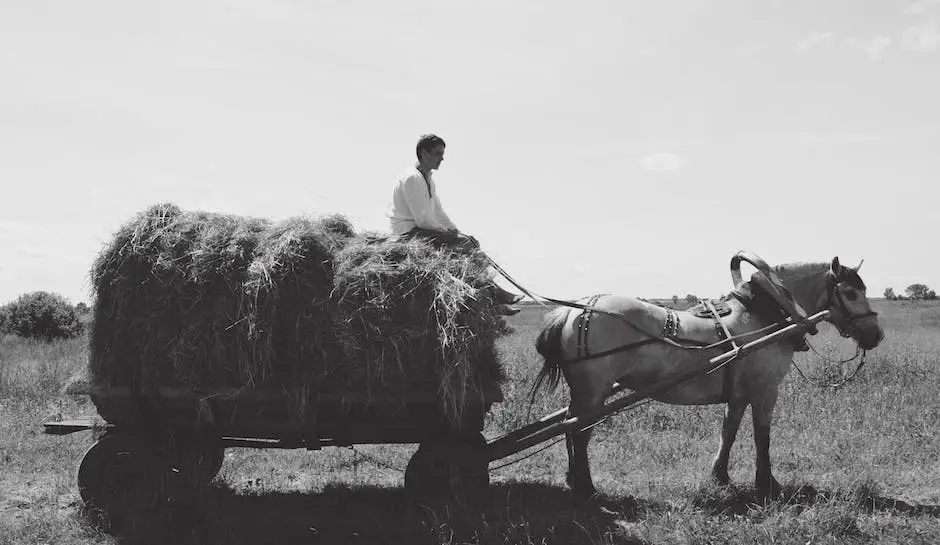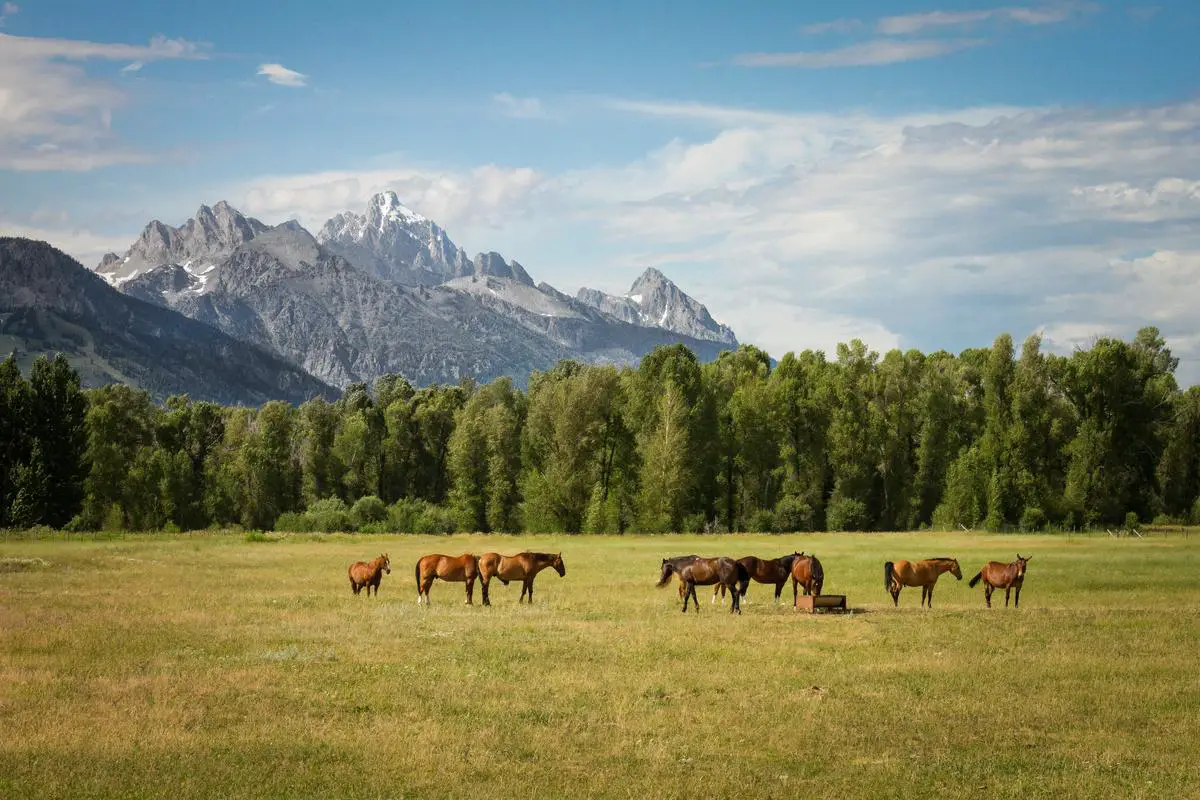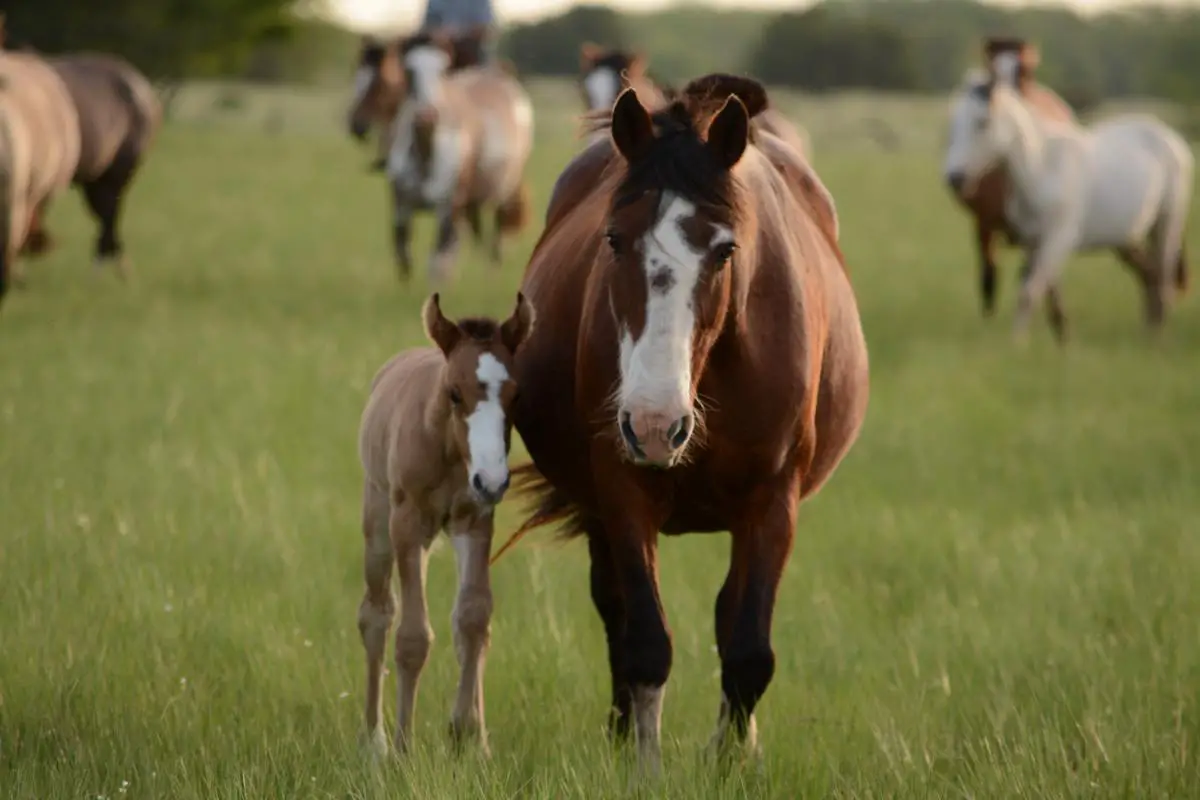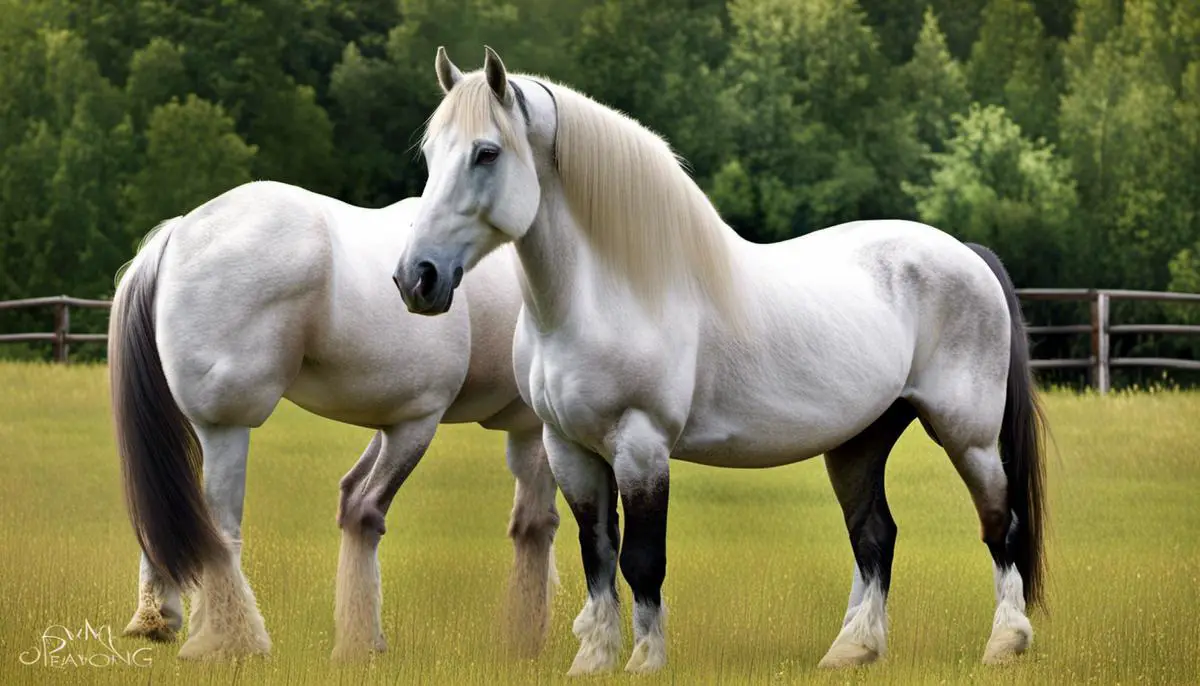Draft horses, formidable and hardy creatures, have been a cornerstone of human civilization for centuries. These magnificent horses, known for their size and strength, have played crucial roles in varying fields, from agriculture to transportation. Beyond their immense power and endurance, the fascinating aspect of these creatures lies in their size variations among different breeds. Understanding the draft horse must start with recognizing what makes them unique, their historical significance, distinct breeds, and the various sizes among these breeds.
Table of Contents (Horspedia)
Understanding Draft Horses
Understanding Draft Horses: Defining the Breed
Draft horses, also known as draught horses in some regions, are large, muscular horse breeds designed for hard, heavy tasks. This includes farm work such as plowing and other heavy draft duties, hence their name. This breed’s origin is in Europe, dating back to the medieval era, and they have been selectively bred throughout history for size, strength, and docility.
Distinct Traits and Roles in History
Draft horses have a calm and gentle nature, which, coupled with their staggering strength and endurance, made them indispensable farming and transportation assets before the advent of modern machinery. Their unique attributes also landed them roles in warfare, from a knight’s charger to heavy artillery pulls.
Draft horses were central to the shift in agricultural practices during the historical period known as the Agricultural Revolution in the 18th century. Their power allowed for the creation of larger, more efficient plowing fields, which, in turn, helped fuel population growth and urban development.
Draft Horses vs Other Breeds
Compared to other breeds, draft horses are notably larger and stronger, with characteristics designed for heavy-duty tasks. Lighter horse breeds like Arabians and Thoroughbreds have been bred for speed and agility, whereas draft horses are built for power and stamina.
Draft horses have broad, short backs, and heavy muscle formation, especially in their hindquarters. They have strong bone structures to support their weight and workload, and have bigger, feathered feet compared to other breeds to help distribute their weight effectively.
Draft horses are a unique blend of size and function that distinguishes them from other equine breeds. Even in an era where much of farming and transportation is mechanized, these gentle behemoths remain invaluable in many communities globally, integral in everything from agriculture and forestry to recreational riding and breed exhibitions.

Varieties and Size Differences Among Draft Horses
Belgian Draft Horse
Hailing from Belgium, Belgian Draft horses are cherished for their robust yet gentle demeanor. Their typical height ranges from 16 to 17 hands (around 162 to 170 cm) and they generally weigh between 1,984 to 2,200 lbs (approximately 900 to 1,000 kg). These horses are mostly observed with chestnut or bay coats and are known for their robustly muscled bodies and strong legs.
Percheron: The French Powerhouse
Percherons are French draft horses that are appreciated for their intelligence, willingness to work, and good nature. They typically stand between 163 and 175 cm (16.1 to 17.1 hands ) tall and can weigh between 900 to 1,200 kg (1,984 to 2,646 lbs). Though they come in a variety of colors, grey and black are the most common.
Clydesdale: The Celebrity Horse
Clydesdales originated from Scotland and are known worldwide for their appearances in commercials, particularly those for the Budweiser beer company. On average, they stand between 162 to 183 cm (16 to 18 hands) tall and weigh between 820 to 910 kg (1,808 to 2006 lbs). They are identified by their feathered legs and solid body.
Suffolk Punch: The Old British Breed
Suffolk Punch, also known as Suffolk Horse, is an old English breed recognized for its endurance and strength rather than speed. They usually stand around 163 to 173 cm (16 to 17 hands) tall and weigh between 900 to 1,000 kg (1,984 to 2,204 lbs). The breed is always chestnut in color, with variations ranging from dark to light and anything in between.
Shire: The Gentle Giant
Shire horses are known for their incredible size, often considered the largest of the draft breeds. Shires typically stand between 168 to 183 cm (16.5 to 18 hands) tall, but some males can reach up to 216 cm (21.2 hands). They also weigh between 850 to 1,100 kg (1,874 to 2,425 lbs), though some exceptionally large stallions have been recorded at weights above 1,500 kg (3,307 lbs). Shires are known for their extensive feathering at the ankles and a variety of colors like black, grey, chestnut, and bay.
American Cream Draft: The Native Cream
The American Cream Draft originated in the United States in the early 20th century. It is generally smaller than other draft breeds, measuring 152 to 163 cm (15 to 16 hands) tall and weighing between 680 to 910 kg (1,500 to 2,000 lbs). The distinguishing feature of this breed is its cream color, often associated with amber eyes.
Draft horses, renowned for their strength, durability, and gentle temperament, are incredibly diverse in terms of size and weight characteristics. These breed-specific variations are what make draft horses a versatile asset in many agricultural, competitive, and recreational settings.

Photo by hollymandarich on Unsplash
Factors Affecting Draft Horse Size
The Role of Genetics in Determining the Size of Draft Horses
The size of a draft horse varies substantially, and this is primarily determined by its genetic background. The breed of the horse significantly impacts its ultimate size. For example, the Belgian draft, among the largest of breeds, usually attains a size of at least 17 hands (or 5.6 feet). In contrast, the smaller Haflinger breed normally stands around 14 hands (or 4.6 feet). This variation in size across different breeds reflects the influence of genetic inheritance. Some genes promote growth while others may restrain it, resulting in a wide range of sizes even within the same breed.
Nutrition’s Impact on Draft Horse Size
An equally important factor affecting draft horse size is nutrition. Good nutrition in early life stages can ensure a draft horse reaches its maximum genetically determined size. A diet rich in protein and balanced nutrients often leads to healthier and taller horses, while under-nourished horses can experience stunted growth. It’s crucial for a young horse to receive balanced nutrients; overfeeding can lead to obesity and other health issues that can hinder growth and development.
Environmental Conditions for Draft Horses
Environmental conditions can significantly affect the size and development of draft horses as well. Draft horses raised in healthy environments, with adequate space, good air quality, and low stress levels, are likely to achieve their full size potential. On the other hand, poor environmental conditions such as overcrowding, pollution, or high-stress levels can negatively impact a horse’s growth and development.
Breeding Practices and Draft Horse Size
Breeding practices also represent an important factor influencing the size of draft horses. Through selective breeding, breeders can concentrate desirable traits, such as the large size, in successive generations of horses. If large horses are continually bred together, the likelihood increases that their offspring will also be large. However, indiscriminate or poor breeding practices can negatively affect size and lead to a decrease in overall breed stature over generations.
Effect of Exercise and Workload on Draft Horse Size
Draft horses, known for their ability to pull heavy loads, can experience size increases due to their workloads. Regular exercise and work stimulate muscle growth and bone strength. Although the basic size is determined by genetics, the muscle tone and overall physique can be shaped significantly by the amount and type of work a draft horse does. However, overworking can have negative health consequences and potentially stunt growth in younger horses.
Deciphering the Size of Draft Horses
The size of draft horses largely depends on their genetic composition. However, environmental factors such as nutrition, breeding practices, the horse’s immediate surroundings, and workload also play a major role in determining whether a horse can reach its full size potential. These factors intertwine to produce a broad range in the size of draft horses.

Photo by sool_lorieto on Unsplash
Impact of Size on Horse Health and Performance
An Overview of Draft Horse Size
Popularly known as heavy horses or workhorses, draft horses distinctively stand out due to their remarkable size and power. On average, these horses stand between 16 to 19 hands high and weigh from 1600 to 2300 pounds. Contrasted against common riding horses, their size is noticeably larger as riding horses typically range only from 14 to 16 hands high and weigh between 900 to 1200 pounds. Draft horses are selectively bred to emphasize size, equipping them for their historical roles in agriculture, hauling, and heavy load pulling.
Health Impact Due to Size
Draft horses’ considerable size can predispose them to a range of health issues. Large hooves and heavy weight expose these horses to a higher risk of developing laminitis, a crippling foot condition. The mammoth size of these horses can also lead to degenerative joint diseases as they age. Their long backs mean that they are prone to back problems, especially if used for riding without appropriate tack and rider weight considerations.
In addition, there are certain conditions such as draft horse paresis and shivers that are more prevalent in these breeds due to their size. Draft horse paresis, also known as “weak horse syndrome,” is characterized by muscle weakness, while shivers is a neurological disorder that causes muscle tremors and poor coordination. Equine metabolic syndrome is another condition often seen in draft horses due to their propensity for weight gain.
Moreover, draft horses’ larger size also makes them more susceptible to issues during childbirth. Foaling problems are more common and often require human intervention.
Size Impact on Lifespan
Lifespan can also be impacted by the size of a draft horse. While this is impacted by many factors, including diet, exercise, and overall health care, larger horses like draft breeds typically live shorter lives than their smaller counterparts. This is primarily due to the health issues mentioned above along with additional strain on the skeletal and cardiovascular systems due to their greater size and weight.
Performance and Suitability for Tasks
A draft horse’s size directly affects its work performance and suitability for particular tasks. Their enormous strength and endurance make them perfect for heavy work such as plowing, logging, and pulling heavy carriages. They are also often used in areas where machinery use is limited or prohibited due to environmental concerns. However, their size can also limit their suitability for some tasks.
While draft horses make dependable and patient riding horses, they are not ideal for speed and agility tasks like racing or endurance riding. Their heavier muscle mass would require more oxygen and energy to maintain a fast pace, making them suitable for slow, steady work rather than quick, sporadic movements.
In conclusion
A draft horse’s size can have significant implications on its health, lifespan, and performance. Therefore, careful consideration of these factors is crucial when determining the right use and care for these magnificent animals.

Understanding the correlation between a draft horse’s size and its health and performance is fundamental to appreciating these beautiful creatures. Whether it be their suitability for specific work or varied lifespans, each breed brings unique traits and capacities to the table. The sheer diversity in size, influenced largely by genetics, nutrition, and living conditions, is a testament to the adaptive and enduring nature of draft horses. Their size and strength must not only be seen as their defining feature but also a necessary adaptation that showcases their role and contribution to human civilization over the centuries.
